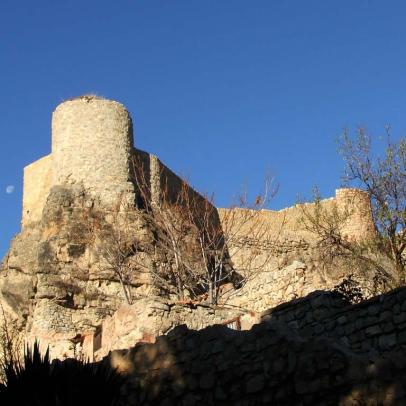Albarracín’s crag-top castle or fortress is situated right in the centre of the old Islamic medina. It crowns the village, making it an impregnable castle for centuries. You need to visit it to understand why. Moreover, the views of the town from the castle are stunning. Although the castle has undergone many alterations over the centuries, archeological conservation and restoration work have contributed to ensuring that its features have an identifiable architectural style.
The walls included 11 towers with circular bases. Archeological works have revealed remains of 12th-century palace constructions that were situated within the Muslim alcazaba. The main room was located at the highest part of the enclosure, which also included a large tank under the patio and hamman (Arab bath). Some of the archeological remains that have been found are displayed at the Museum of Albarracín, which contains one of the most important 11th-century ceramic collections.
The history of this castle is linked to Banu Razin, who took control of this region during the Caliphate period. After the Caliph was overthrown, the region was replaced by local kings, becoming a taifa.
At the time of El Cid, Albarracín was the seat of the Islamic state ruled by Banu Razín. In 1088 envoys from the taifa of Albarracín came to Calamocha to hold a face-to-face meeting with El Cid, who had encamped in this place. After the meeting, Bany Razí became a tributary to El Cid.
Until 1093 the taifa was nominally subject to the rule of El Cid. However, the situation changed when Rodrigo learnt that the King of Albarracín wanted to take control of Valencia, where he had established a protectorate. In order to secure the approaches to Valencia, he attacked this region in September 1093. In the skirmish, he received a lance-thrust in the neck that left him so badly wounded that for a time his life was despaired of.
References to Albarracín are included in El Cantar de Mío Cid: situated halfway between Molina de Aragón and Teruel, Albarracín is, according to the poem, one of the places along which El Cid’s escort of horsemen passed when proceeding towards Medinaceli to look for El Cid’s family. It is also the place where El Cid’s daughters and their husbands spent the night when going back to Castile after celebrating their wedding in Valencia.
Rev. PAB 27.12.18



















